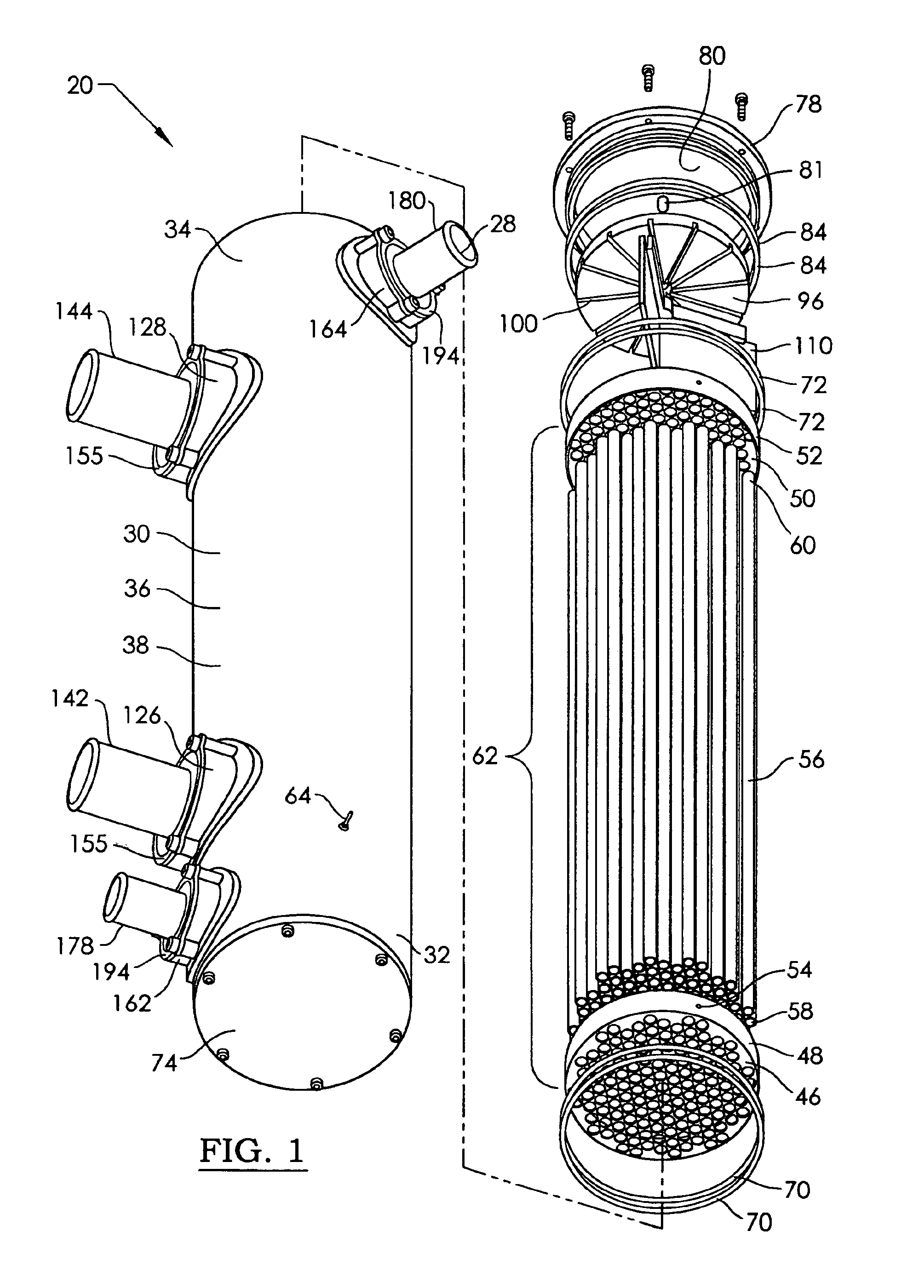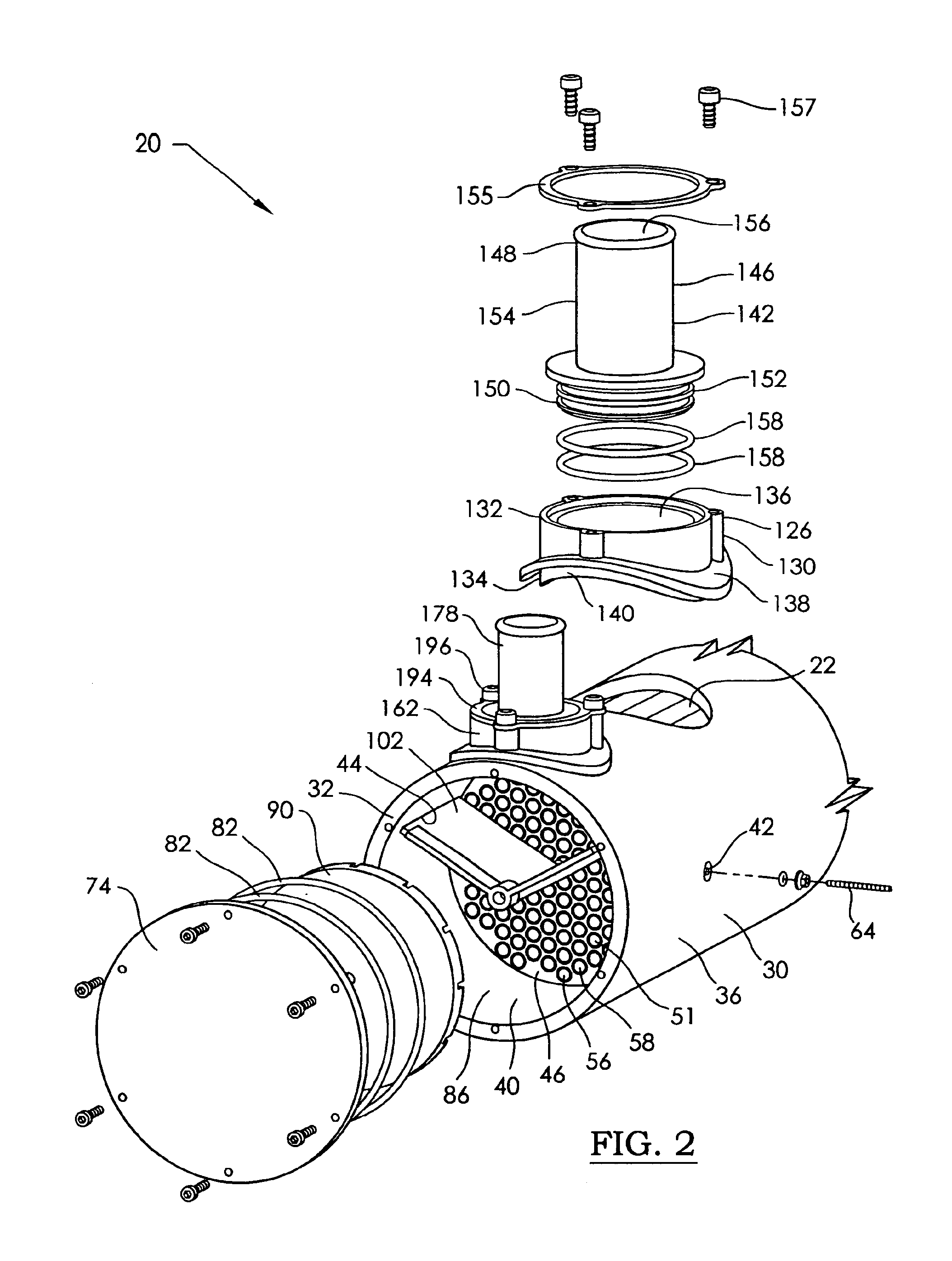Plastic heat exchanger
a heat exchanger and plastic technology, applied in the field of heat exchangers, can solve the problems of not being able to change the location of the nozzle without expensive tooling changes, no means are provided for sealing the separator divider against leakage, and none of the prior-art inventions have provision for grounding a metal tube bundle to the engin
- Summary
- Abstract
- Description
- Claims
- Application Information
AI Technical Summary
Problems solved by technology
Method used
Image
Examples
Embodiment Construction
[0042]Referring now to the drawing, and especially to FIGS. 1, 2, 4, 5, and 6 thereof, a shell and tube heat exchanger constructed in accordance with the invention is shown at 20. The heat exchanger is used for transferring heat between a shell coolant flowing around the outside of the tubes, and a tube coolant flowing inside the tubes. The heat exchanger is for use particularly with a marine engine. The coolants will be carried by external conduits between the engine and the heat exchanger. The shell coolant will typically be a glycol-based engine coolant. The tube coolant will typically be seawater. It is to be understood that the tube coolant can be the engine coolant, and the shell coolant can be the seawater. It is also to be understood that the heat exchanger can be used for a variety of applications, such as a stationary engine, or a process plant. Further, the coolants can be any heat exchanging fluid medium. The heat exchanger 20 has first 22 and second 24 shell coolant pas...
PUM
| Property | Measurement | Unit |
|---|---|---|
| Time | aaaaa | aaaaa |
| Angle | aaaaa | aaaaa |
| Heat | aaaaa | aaaaa |
Abstract
Description
Claims
Application Information
 Login to View More
Login to View More - R&D
- Intellectual Property
- Life Sciences
- Materials
- Tech Scout
- Unparalleled Data Quality
- Higher Quality Content
- 60% Fewer Hallucinations
Browse by: Latest US Patents, China's latest patents, Technical Efficacy Thesaurus, Application Domain, Technology Topic, Popular Technical Reports.
© 2025 PatSnap. All rights reserved.Legal|Privacy policy|Modern Slavery Act Transparency Statement|Sitemap|About US| Contact US: help@patsnap.com



